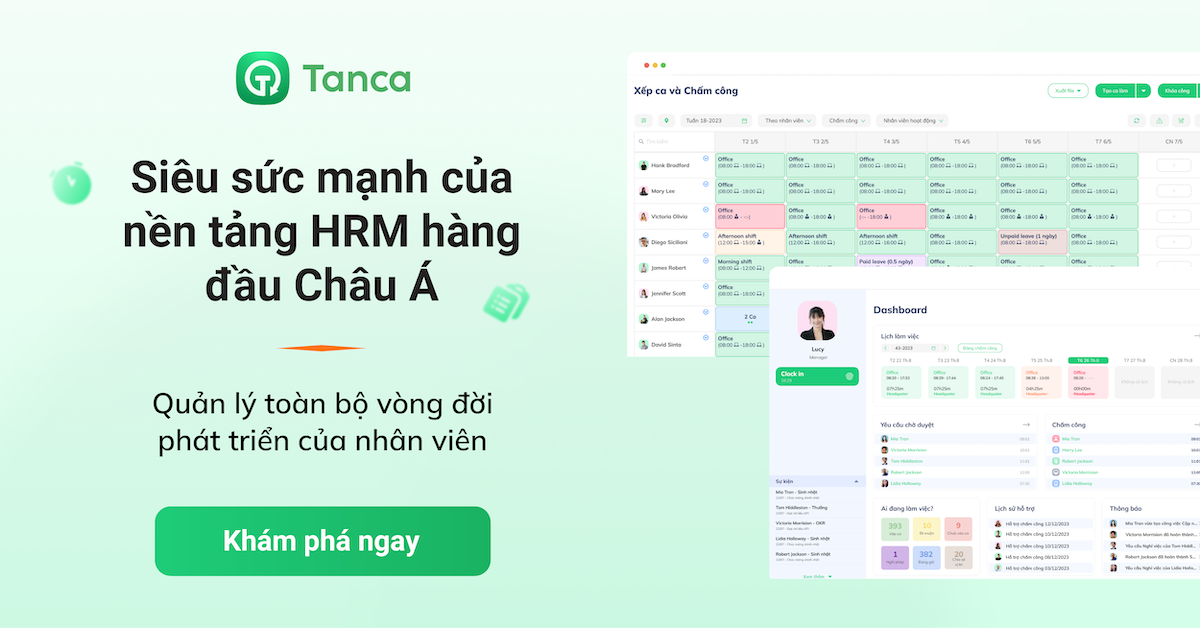Retail HR challenges are unique and dynamic, requiring a strategic approach to managing the complexities of human resources in the fast-paced retail industry. As retailers face evolving consumer demands, technological advancements, and intense competition, HR professionals play a crucial role in ensuring the success of their organizations.
From attracting and retaining top talent to developing effective training programs and maintaining compliance, retail HR professionals face a myriad of challenges that demand their expertise and adaptability.
In this article, we explore the key challenges faced by HR in the retail sector and shed light on strategies to overcome them, empowering retail organizations to thrive in today's competitive landscape.
7 Retail HR Challenges

1. Attracting and Retaining Employees
The retail industry faces the constant challenge of attracting and retaining talented employees, especially in an increasingly competitive job market. To overcome this, companies are implementing innovative strategies.
For instance, retailer Nordstrom has introduced a unique employee recognition program called "Nordstrom Legends," where employees are celebrated for exceptional performance. This program not only boosts employee morale but also attracts top talent who are eager to work for a company that recognizes and values their contributions.
To overcome this, companies are implementing innovative strategies. Building a strong employer brand and offering competitive compensation packages are essential. Additionally, providing growth opportunities and investing in employee development play a crucial role in attracting and retaining top talent.
2. Employee Safety
Ensuring employee safety is a top priority in the retail industry, particularly in physically demanding roles and customer-facing environments.
Retail giants like Walmart have implemented comprehensive safety programs to protect their workforce. They provide regular safety training, equip employees with personal protective equipment, and enforce strict safety protocols.
By prioritizing employee safety, these companies create a secure work environment and foster a culture of well-being.
3. Scheduling and Workforce Planning
Efficient scheduling and workforce planning are critical for retail organizations to optimize productivity while meeting fluctuating customer demand.
Starbucks, for example, utilizes advanced workforce management systems to analyze historical sales data, customer footfall patterns, and employee availability.
This data-driven approach allows them to create accurate schedules, ensure sufficient staffing during peak hours, and improve employee satisfaction by promoting work-life balance.
4. Redefining the Role of HR within the Business
Forward-thinking retailers are redefining the role of HR within their organizations to drive strategic value.
For instance, Zappos, known for its strong company culture, has embraced a unique HR approach. They have eliminated traditional job titles and hierarchies, encouraging employees to take on different roles and contribute ideas outside their job descriptions.
This fosters a culture of collaboration, innovation, and engagement, where HR plays a pivotal role in nurturing and supporting this organizational transformation.
By aligning HR strategies with overall business goals and investing in HR professional development, organizations position HR as a strategic partner in driving organizational success.
5. Access to Earned Income

To address the challenge of accessing earned income, some retailers are adopting innovative financial solutions.
Walmart, for instance, offers its employees access to earned wages through an app called Even. This allows employees to access a portion of their earned income before their scheduled payday, providing greater financial flexibility and stability.
By partnering with financial service providers, retail organizations can offer flexible payment options and transparent payroll processes, empowering employees and improving their financial well-being.
6. Enabling Digital Employee Experience
In the digital age, retail HR departments are leveraging technology to enhance the employee experience.
Target has implemented an integrated HR technology platform called "myHR." This platform provides employees with self-service capabilities, enabling them to access their pay stubs, benefits information, and manage work schedules conveniently.
By digitizing HR processes, Target streamlines administrative tasks, improves communication, and empowers employees with easy access to relevant information.
7. Building a Diverse and Inclusive Workplace
Companies in the retail industry recognize the importance of building a diverse and inclusive workforce.
Gap Inc. is a notable example, known for its commitment to diversity and inclusion. They have implemented comprehensive diversity training programs and established employee resource groups that celebrate different cultures, backgrounds, and perspectives.
By creating an inclusive workplace, Gap Inc. fosters an environment where employees feel valued and empowered to contribute their best.
By addressing these retail HR challenges with effective strategies, organizations can overcome obstacles and optimize their HR practices. These industry examples demonstrate the practical application of these strategies and highlight the success achieved by leading retailers.
Implementing these strategies tailored to the specific needs of the organization can lead to improved employee engagement, productivity, and overall organizational success.
Explore more: Why Employee Recognition Matters?
11. Comprehensive Approach to Overcoming Retail HR Challenges

Developing a comprehensive approach to address retail HR challenges is crucial for organizations to thrive in the competitive industry. By integrating strategies across various HR areas, organizations can create a holistic and effective solution. Here are key components of a comprehensive approach:
Alignment with Business Goals
Ensure HR strategies align with overall business goals and objectives. By understanding the organization's mission and vision, HR can develop initiatives that directly contribute to the company's success. For example, if a retail organization aims to enhance customer experience, HR can focus on employee training and development programs to improve customer service skills.
Data-driven Decision-making
Leverage data and analytics to inform HR decisions. Use workforce data to identify patterns, trends, and areas of improvement. For instance, analyzing turnover rates and exit interview data can uncover insights on employee retention challenges, enabling HR to develop targeted strategies for improvement.
Technology Integration
Adopt HR technology solutions that streamline processes and improve efficiency. Integrated HR management systems, employee self-service portals, and automated workflows can simplify administrative tasks, enhance communication, and free up HR professionals to focus on strategic initiatives.
Employee Engagement and Recognition
Prioritize employee engagement initiatives to foster a positive work environment. Implement regular employee feedback mechanisms such as surveys, focus groups, or suggestion boxes to gather insights and address concerns. Recognize and reward employees for their contributions to boost morale and motivation.
Continuous Learning and Development
Maximize the potential of your workforce by making strategic investments in employee learning and development initiatives. These programs are instrumental in augmenting skills and expanding knowledge. By empowering your workforce with comprehensive training, you are equipping them with the tools they need to thrive in their respective roles. Furthermore, by incorporating cross-training options, you can foster a workforce that is versatile, adaptable, and capable of tackling multifaceted challenges with utmost agility.
Diversity and Inclusion
Foster workplace diversity and inclusion through inclusive hiring, diversity training, and a culture that values diverse perspectives. Embracing diversity drives innovation, boosts employee satisfaction, and improves customer service for a diverse clientele.
Work-Life Balance
Recognize the importance of work-life balance for employee well-being. Offer flexible scheduling options, promote remote work arrangements where feasible, and provide resources for stress management and mental health support. Prioritizing work-life balance can contribute to increased employee satisfaction and reduced turnover.
Employee Well-being Programs
Go above and beyond conventional benefits by implementing holistic employee well-being programs. These encompass a range of initiatives, including mental health support, flexible work arrangements, employee assistance programs, and engaging wellness activities. By placing a premium on employee well-being, you cultivate a workplace culture that uplifts morale, enhances productivity, and promotes long-term retention. Prioritizing the well-being of your employees not only demonstrates care and support but also contributes to a thriving and successful organization.
Agile Workforce Planning
Embrace agile workforce planning strategies to proactively adapt to evolving market demands. By constructing a flexible talent pool, harnessing the potential of contingent workers, and leveraging on-demand staffing platforms, you can swiftly adjust your workforce size in response to seasonal fluctuations or unforeseen shifts in demand.
Adopting these agile practices enables your organization to remain nimble, effectively meeting market requirements while optimizing operational efficiency. Stay ahead of the curve by embracing workforce flexibility as a strategic advantage in today's dynamic business landscape.
Continuous Feedback and Performance Management
Implement regular performance feedback processes that go beyond annual reviews. Embrace continuous feedback mechanisms, such as regular check-ins and real-time performance tracking, to provide timely guidance and support to employees. This fosters a culture of growth and development.
Collaboration with External Partners
Establish partnerships with external organizations, such as industry associations, universities, or consulting firms, to gain insights and access resources to address specific HR challenges. Collaboration with external partners can provide fresh perspectives and access to expertise that competitors may not have tapped into.
FAQs

Where can HR professionals find resources and support for managing retail HR challenges?
HR professionals can find resources and support for managing retail HR challenges through industry associations, professional HR networks, online forums, HR publications, webinars, and consulting firms specializing in HR solutions for the retail industry.
How can retail organizations effectively address conflicts and employee relations issues?
Resolve conflicts and improve employee relations in retail organizations by establishing clear conflict resolution policies, providing communication and conflict management training, and offering resources such as employee assistance programs and mediation services.
How can retail organizations address the challenge of seasonal workforce management?
Retail organizations can address seasonal workforce management challenges by developing a robust recruitment strategy for seasonal hiring, offering training programs for seasonal employees, providing clear expectations and guidelines, and leveraging technology for efficient scheduling and communication.
Conclusion
In conclusion, the retail industry presents unique and multifaceted challenges for HR professionals. From talent acquisition and retention to training and compliance, HR teams in the retail sector face a diverse range of obstacles that require strategic solutions. By recognizing the specific challenges and proactively implementing effective HR strategies, retail organizations can position themselves for success in a competitive landscape.
To delve deeper into the world of retail HR challenges and discover valuable insights and best practices, we invite you to read more informative posts on Tanca's blog. Our blog provides a wealth of resources and expert perspectives on tackling HR challenges in the retail industry.
Furthermore, if you're seeking to enhance your HR operations and leverage innovative HR software solutions tailored for the retail sector, please don't hesitate to contact us. Our HR software offers comprehensive features designed to streamline HR processes, improve efficiency, and drive organizational growth.










